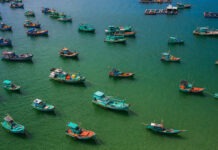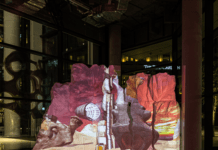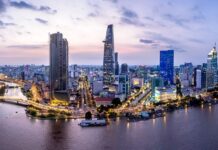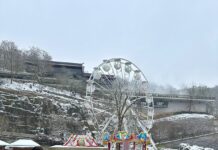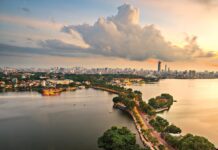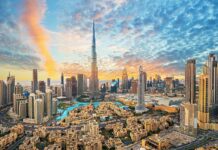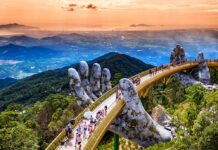The energy of its contemporary culture is in contrast to a landscape that is ancient and often looks it: much of central and western Australia – the bulk of the country – is overwhelmingly arid and flat. In contrast, its cities, most founded as recently as the mid-nineteenth century, bursts with a vibrant, youthful energy.
The most iconic scenery is the Outback, the vast fabled desert that spreads west of the Great Dividing Range into the country’s epic interior. Here, vivid blue skies, cinnamon-red earth, deserted gorges and geological features as bizarre as the wildlife. Here are the best places to visit in Australia.

Sydney: The capital of New South Wales plays host to the photogenic Sydney Harbor (the world’s largest natural harbor), the one-of-a-kind Sydney Opera House, a lively entertainment scene and some of the best restaurants in the world. Bondi Beach offers incredible surfing opportunities, fantastic cafes and restaurants, designer shops and plenty to keep you busy. Take a casual stroll along the Bondi to Coogee Coastal Walk – one of Sydney’s most scenic treks. Aside from treks, relax at Sydney’s sought-after eastern beaches, including Bronte Beach and Clovelly.
There is also Taronga Zoo which houses more than 4,000 animals from various exotic and native species, including gorillas, tigers, leopards, chimpanzees, giraffes, Australian sea lions, kangaroos and koalas. Once you have been up close with the animals, experience the wildlife from a new perspective by tackling the treetop Wild Ropes – more than 60 high rope challenges over four courses, including zip-lines, rope climbs and suspended bridges.

Melbourne: The second-largest city in Australia is overflowing with first-rate attractions, from cultural and architectural highlights to amazing outdoor locations. The center of Melbourne is threaded with cobbled laneways, which have become a mecca for coffee shops, cafés and unique shopping boutiques. There are also top-rate museums such as the National Gallery of Victoria to stunning nearby getaways such as Port Campbell National Park. The National Gallery of Victoria (NGV) is Australia’s oldest gallery and hosts an exciting range of exhibitions and events, and a collection of more than 70,000 works. Also, the Heide Museum of Modern Art at Bulleen provides an insight into Australian artists. In the evening, catch a performance at one of Melbourne’s many theatres, which host everything from musicals to comedy. Discover Aboriginal culture at the Melbourne Museum’s Bunjilaka Aboriginal Culture Centre and the Aboriginal-owned Koorie Heritage Trust.

Perth: Australia’s sunniest capital city, Perth effortlessly blends urban cool with raw natural beauty. Its heart is bustling with new bars, restaurants, shopping and cultural spaces, and is also home to Kings Park – one of the world’s largest inner city parks. Also worth mentioning is Swan Valley and a string of stunning beaches.

Cairns: Set along the Pacific, Cairns is the jumping-off point for the Great Barrier Reef and the UNESCO World Heritage-listed Daintree Rainforest, among other natural wonders. The city of about 150,000 has a growing cafe scene, swimming lagoon and a relaxed vibe. The only living thing on Earth visible from space, the Great Barrier Reef was born 25 million years ago.
The world’s largest reef system stretches for 3,000 kilometers (1,865 miles) off the Queensland coast and has 400 types of coral and 1,500 species of tropical fish. Along with diving and snorkeling, you can also fish and island hop.

Blue Mountains: Famous for its rock formation known as the Three Sisters – along with quaint hotels and charming townships. Here you can discover one million hectares (2.5 million acres) of tall forests, sandstone cliffs, waterfalls and bushland, either mountain biking, abseiling or on foot. They contain some of the world’s oldest species of plants including Wollemi pines, which are the botanical equivalent of dinosaurs.
Soaring forests, canyons, sandstone cliffs and waterfalls are some of the major draws for outdoor enthusiasts. The eucalyptus oil from gum trees gives the vistas in the Blue Mountains their namesake haze.

Rottnest Island: With 63 beaches, Rottnest Island is a great destination for water sports, including swimming, diving, surfing, fishing and snorkeling. It is also the perfect location to see humpback and southern right whales as they make their annual migration along Western Australia’s coastline. Aside from mammals, the island is home to the quokka, as well as the world’s most critically endangered mammals, Gilbert’s potoroo.

Atherton Tablelands: Climbing back from the coast between Innisfail and Cairns is the fertile food bowl of the far north, the Atherton Tablelands. Quaint country towns, eco-wilderness lodges and luxurious B&Bs dot greener-than-green hills between patchwork fields, pockets of rainforest, spectacular lakes, waterfalls and Queensland’s highest mountains, Bartle Frere (1622m) and Bellenden Ker (1593m).
The Tablelands is the traditional home of the Djirrbal and Ngadjonji tribes of the Djirrbalngan language group, while the area around Kuranda and Yungaburra is the land of the Djabugay (Tjapukai) and Yidinji peoples.
The Atherton Tablelands is included in the 1988 World Heritage Listing because of its natural beauty and fragile ecosystem.

Kangaroo Island: Several conservation parks provide the local wildlife with welcome sanctuary. Kangaroos and tammar wallabies are relatively common in several of the island’s reserves, including Black Swamp in Flinders Chase National Park and Lathami Conservation Park.
Several species of rare birds live in Lathami Conservation Park and Baudin Conservation Park, including the critically endangered glossy black cockatoo. On the western side of Kangaroo Island, Flinders Chase National Park is a large natural sanctuary for many species of native Australian animals, like rare tammar wallabies and the elusive platypus. A major attraction here is Remarkable Rocks, a seaside collection of enormous orange-lichen-covered granite boulders carved into strange shapes by millions of years of rain, wind and waves. Another highlight is Admirals Arch, a distinctive stalactite-covered eroded rock bridge smashed by waves that sometimes plays host to basking New Zealand fur seals.








